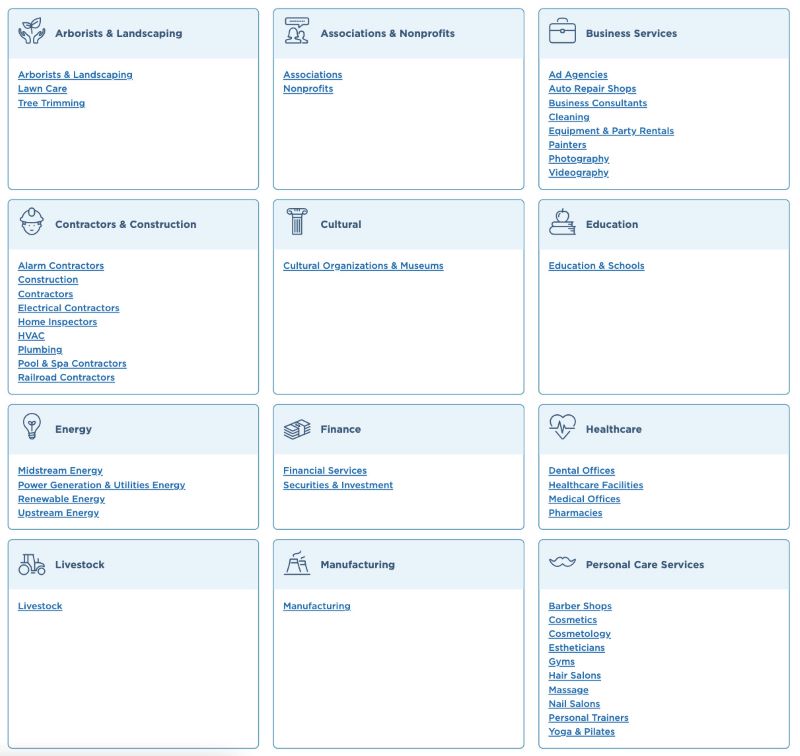Knowing how to invest in commercial real estate offers a lucrative opportunity for those looking to expand their investment portfolio beyond traditional stocks and bonds or residential real estate. Successful commercial real estate investing for beginners requires a deep understanding of market dynamics, property valuation, and legal complexities. Whether you’re considering an industrial warehouse, a busy retail space, or a modern office building, success demands meticulous research, strategic planning, and a sharp eye for opportunity.
Commercial real estate investment can be a rewarding venture with the potential for high returns, passive income, and significant growth. Here’s a step-by-step guide on investing in commercial real estate for beginners:
Step 1: Understand the Commercial Market
If you’re considering investing in commercial real estate, it’s essential to have a solid understanding of what qualifies as commercial real estate and the market dynamics that play a key role in influencing supply and demand across various property types.
Commercial real estate typically includes properties used for business purposes, such as office buildings, retail spaces, industrial warehouses, multifamily housing units over a certain size, and mixed-use buildings that combine commercial and residential spaces.

Learn more about market trends through realtor.com (Source: realtor.com)
Conducting thorough research on commercial real estate market statistics, trends, economic indicators, and sector-specific performance can help you identify the areas with the highest growth potential. By leveraging platforms such as realtor.com, Deloitte, and CBRE, you can access valuable insights into the market conditions that drive commercial real estate investment. These tools can assist in making informed decisions and developing effective strategies to maximize your return on investment (ROI).
Step 2: Assemble a Skilled Team
Investing in commercial property can be complex and challenging, requiring expertise in various fields. To guarantee a successful investment, I highly recommend assembling a team of professionals who can guide you through the intricacies of commercial transactions. Ideally, this team should comprise the following:
- Real estate agent: Your real estate agent guides you from the beginning to the end of your property transaction. They ensure you meet all necessary requirements, identify properties that align with your investment goals, and negotiate with sellers to secure favorable terms on your behalf. To learn how to invest in commercial real estate effectively, finding a real estate agent specializing in this area is essential. This ensures you receive expert guidance tailored to your specific investment needs.
- Attorney: The attorney navigates the legal dimensions of your property deal. They verify compliance with all legal standards, review your purchase agreement terms, and address any legal concerns, ensuring a smooth and compliant transaction process.
- Financial adviser: Your financial adviser evaluates the financial soundness of your commercial property investment. They analyze rental income potential and capital appreciation and help you determine if the investment aligns with your overall financial objectives.
- Mortgage broker: The mortgage broker assists in obtaining the necessary financing for your property purchase. They identify the best lenders for your situation and negotiate terms and interest rates that favor your investment plan, ensuring you secure the optimal financing solution.

This team will guide you through the intricacies of commercial transactions. By assembling a team of professionals with expertise in these various fields, you can feel confident that you are making informed decisions throughout the commercial real estate investing process.
Step 3: Choose the Right Property Type
Commercial real estate is a broad category that covers diverse property types, each with distinct characteristics, investment potentials, and risk profiles. When learning about investing in commercial real estate for beginners, it’s essential to understand the different types of properties. Recognizing these distinctions is vital for identifying investments that align with your financial goals, available capital, and risk tolerance.
To make informed investment decisions, evaluating the current market performance and future outlook for each property type is important. This involves analyzing market trends, vacancy rates, rental rates, and supply and demand factors.
Step 4: Conduct Thorough Due Diligence
Once you’ve identified a potential investment, the next step on how to invest in commercial real estate is to conduct thorough due diligence. This involves examining the property’s financials, legal standing, physical condition, and compliance with zoning regulations. Due diligence is critical in uncovering potential issues affecting the investment’s profitability. Here’s a closer look at the key areas to scrutinize:
- Financial performance: Analyze the property’s income generation, occupancy levels, and operational costs to assess its current market value and forecast its revenue potential. This information will help you determine the property’s current value and potential for growth and profitability.
- Legal clearances: Investigate any potential legal issues, such as outstanding liens or lawsuits, that could affect the investment’s profitability. Ensure the property is free of any legal disputes or issues that could result in costly legal battles.
- Structural integrity: Assess the property for any necessary repairs, maintenance, or upgrades. This will determine the property’s overall condition and estimate any potential costs associated with repairs or upgrades.
- Zoning compliance: Ensure the investment is legal and compliant with local laws and regulations. This will prevent any potential legal issues down the line and validate the investment’s viability in the long term.

Step 5: Secure Financing
Commercial real estate investments typically require significant upfront capital. However, various financing options are available to help you secure the necessary funding. As a commercial real estate investor, explore these options and understand their terms and conditions to choose the best fit for your investment strategy. This will ensure a successful and profitable investment.
Below are some of the most common financing methods you might want to consider:
Traditional Loans
One of the most common financing methods is through traditional loans. Banks and other financial institutions commonly offer these loans, typically requiring a down payment of around 20% to 30% of the property’s purchase price. The interest rates and repayment terms of these loans vary, so it’s crucial to shop around and compare different lenders to find the best deal. Here are some commercial real estate loan types you might want to consider:
Loan Type | Interest Rate | Maximum Loan Amount | Funding Timeline | Loan Term |
|---|---|---|---|---|
Starts at base rate plus 3% | Up to $5 million | Within 30 days | Up to 25 years | |
Pegged rate above current 10-year United States Treasury note | Up to $5.5 million | 30 to 90 days | Up to 25 years | |
Conventional Commercial Mortgage Loan | Varies, generally between 5% and 8% | No limit | 30 to 45 days | 5 to 25 years |
Generally between 6% and 12% | Varies, usually up to 85% loan-to-cost (LTC) ratio | 1 week to 30 days | 12 to 36 months | |
Generally between 7% and 15% | Varies, usually 65% to 80% LTC | 1 to 2 weeks | 12 to 36 months |
Types of commercial real estate loans (Source: Fit Small Business)
Real Estate Investment Trusts (REITs)
Another option is to invest in real estate investment trusts (REITs). These companies own and manage commercial real estate properties and allow investors to purchase shares. REITs can provide investors with a steady income stream through dividends and are often considered a more passive investment option. Additionally, the diversification opportunities through REITs’ varied property portfolios across different regions and sectors mitigate investment risks and enhance potential returns.
How REITs work (Source: Fit Small Business)
Furthermore, REITs relieve investors from their day-to-day operational responsibilities and enhance property value through expert administration. Tax advantages are another significant benefit, as REITs often enjoy lower tax rates on dividends and are exempt from corporate taxes on distributed income, which can lead to higher overall returns for shareholders. These factors collectively make REITs appealing to those new to the market.
Crowdfunding Platforms
Crowdfunding platforms have become a popular way to finance real estate investments. These platforms allow investors to pool their money together to fund a project, and investors can typically invest smaller amounts of money than what is required for traditional loans or REITs. However, not all crowdfunding platforms are created equal, and investors should thoroughly research the platform and the investment opportunity before committing any funds.

Explore commercial real estate for beginners and find easy investment opportunities with Groundfloor. (Source: Groundfloor)
Groundfloor stands out as one of the top crowdfunding platforms for investors, offering a user-friendly interface that allows for investments starting at just $10. It distinguishes each investment opportunity with a detailed ranking system from A to G, where A represents the lowest risk and G indicates higher risk levels. Investors can contribute to a project until it achieves its full funding target, making it an accessible option for investing in commercial real estate for beginners.
Step 6: Manage Your Investment
Effective management is key to realizing the full potential of your commercial real estate investment. Consider hiring a property manager or management company to oversee the day-to-day operations of your property, including tenant relations, rent collection, and maintenance issues.
Another alternative is enlisting property management company software to streamline investment management. Such platforms offer crucial support by marketing your property, screening potential tenants, and handling lease negotiations. They also manage tenant complaints, ensure timely rent payments, and oversee repairs and maintenance. Employing a property management company lets you concentrate on other business priorities while ensuring your investment remains profitable.

Buildium offers a commercial property management software solution. (Source: Buildium)
A highly recommended option is Buildium, which provides comprehensive functionalities designed to optimize and streamline commercial real estate property management. Buildium’s standout feature is its integrated accounting system, which allows for complete oversight and management of financials and payments from start to finish. This feature not only saves time but also reduces the likelihood of human errors in accounting. Additionally, Buildium offers assistance on maintenance tasks to improve responsiveness.
Step 7: Protect Your Investment
Most financial institutions require commercial property insurance since it is in their interest that the property be covered. But even if you purchase the property outright, you will still want to protect your investment. That’s where business insurance comes into play. Commercial property insurance is a first-party coverage that protects your commercial property from certain types of losses, like wind blowing a tree over the building or a fire.
Even if your commercial real estate investment is vacant land, you still want to consider premise liability. This liability coverage protects your business from claims made by other parties who, due to your negligence, were injured on your property.

The Hartford’s commercial insurance solutions by industry (Source: The Hartford)
I recommend The Hartford for commercial property insurance, which caters to various industries, including advertising, graphic design, barbershops, electrical contractors, financial institutions, pet grooming, and retail. What sets The Hartford apart is its unique offering of commercial property insurance as standalone coverage. Unlike other providers we evaluated, The Hartford does not require bundling with general liability insurance in a Business Owner’s Policy (BOP), providing more flexibility in coverage options.
Pros & Cons of Investing in Commercial Real Estate
Learning how to invest in commercial property can be immensely rewarding. It offers substantial income potential, portfolio diversification, and a hedge against inflation. However, like all investments, it comes with its share of risks and downsides. Understanding these pros and cons is essential for making informed investment decisions.
Pros | Cons |
|---|---|
Higher income potential: Commercial real estate generally offers higher rental income and ROI compared to residential real estate. | Higher initial investment: Commercial real estate requires a more significant upfront investment, making it less accessible for some investors. |
Long-term leases: Commercial leases tend to be longer, providing stable income and reducing turnover costs. | Complex management: Managing commercial properties can be more complex due to the specifics of commercial leases and property maintenance. |
Inflation hedge: Property values and rents typically increase with inflation, protecting investors’ purchasing power. | Market sensitivity: Commercial real estate investments can be more sensitive to economic cycles, affecting occupancy rates and property values. |
Frequently Asked Questions (FAQs)
Investing in real estate with $1,000 is possible through a few strategic avenues. One effective way is through real estate investment trusts (REITs), which allow you to purchase shares in commercial and residential real estate portfolios, similar to buying stocks. Another option is to use crowdfunding platforms that enable collective property investments with minimal initial capital. Both methods offer exposure to real estate markets without needing large upfront investments typically associated with property purchases.
A good return on investment (ROI) for commercial real estate typically ranges between 8% and 10%, depending on the property type, location, and market conditions. Properties in prime locations with stable tenant occupancy often yield higher returns. Also, consider property management costs, maintenance, taxes, and potential vacancies when calculating expected ROI. Ultimately, a “good” ROI should align with your financial goals and the specific risks associated with the commercial real estate market.
The most profitable type of commercial real estate often includes properties that can house numerous tenants, maximizing revenue generation through multiple income streams. Multifamily projects, student housing, and mixed-use buildings are particularly notable for their high profitability. Office spaces and self-storage facilities offer substantial returns, especially in high-demand areas. These types of properties not only ensure steady cash flow but also tend to maintain high occupancy rates, contributing to their profitability.
Bottom Line
Understanding how to invest in commercial real estate opens the door to diversification, higher income potential, and capital appreciation. However, successfully navigating the commercial real estate market requires careful planning, due diligence, and proactive management. By following the steps outlined in this guide about investing in commercial real estate for beginners and weighing the pros and cons, you can make informed decisions and capitalize on the opportunities presented by this type of investment.





